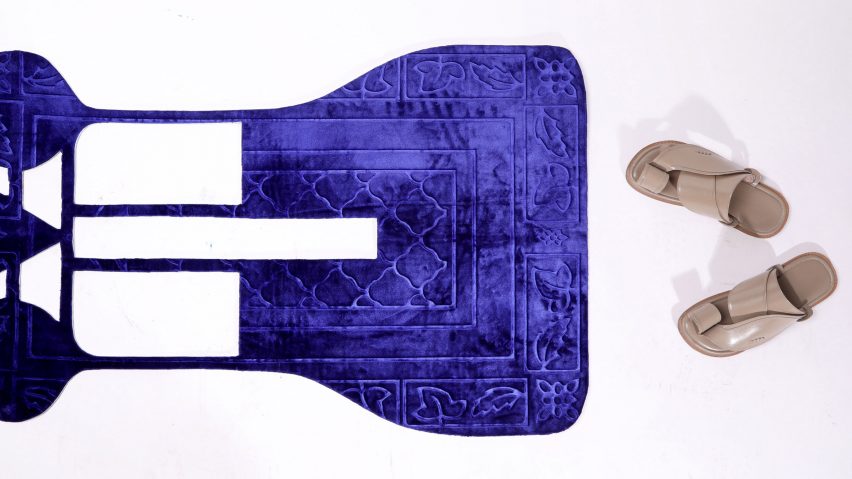
Sustainable prayer mat uses 50 per cent less material than traditional counterpart
Bahraini design office Shepherd Design Studio has reinterpreted the traditional Islamic prayer mat to make it more sustainable.
The prayer rug uses less than half the material of its traditional counterpoint. It features an irregular form that is shaped around the seven points of contact the body has with the mat during prayer.
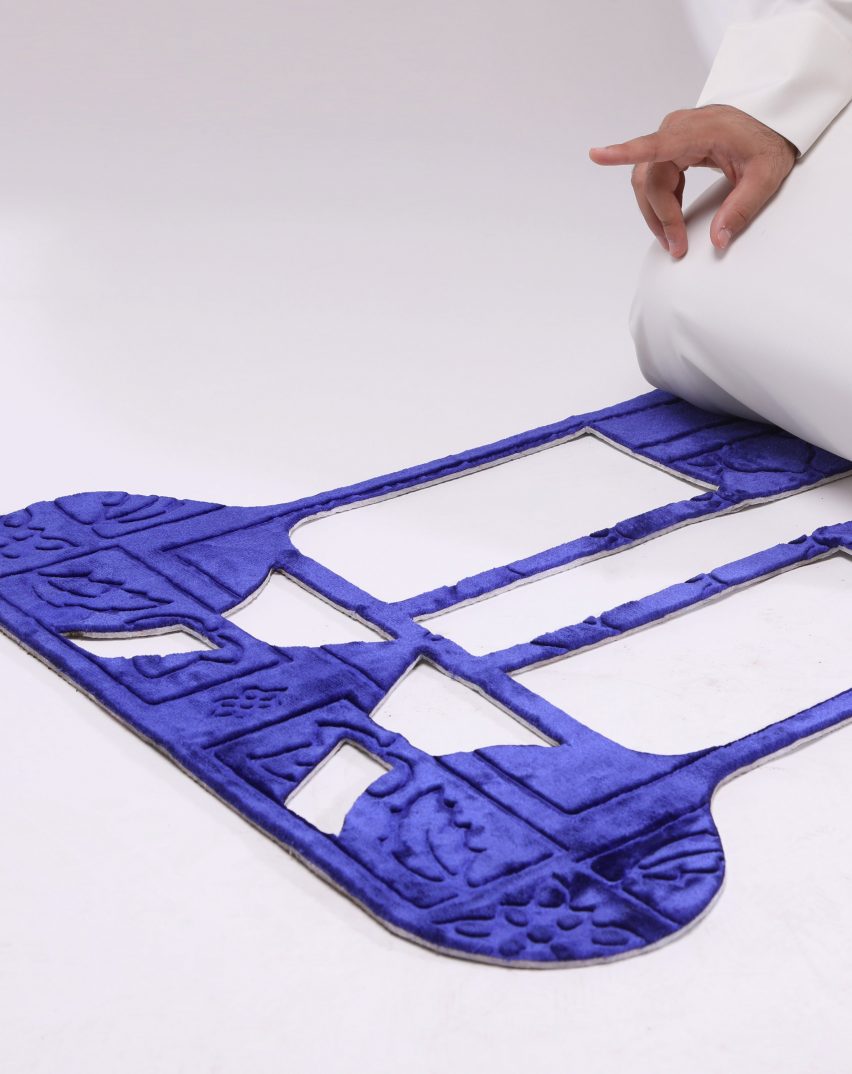
"When Muslims are in prostration during prayer, there are seven points that make contact with the mat: the forehead, two hands, two knees and two feet," explained Shepherd Design Studio.
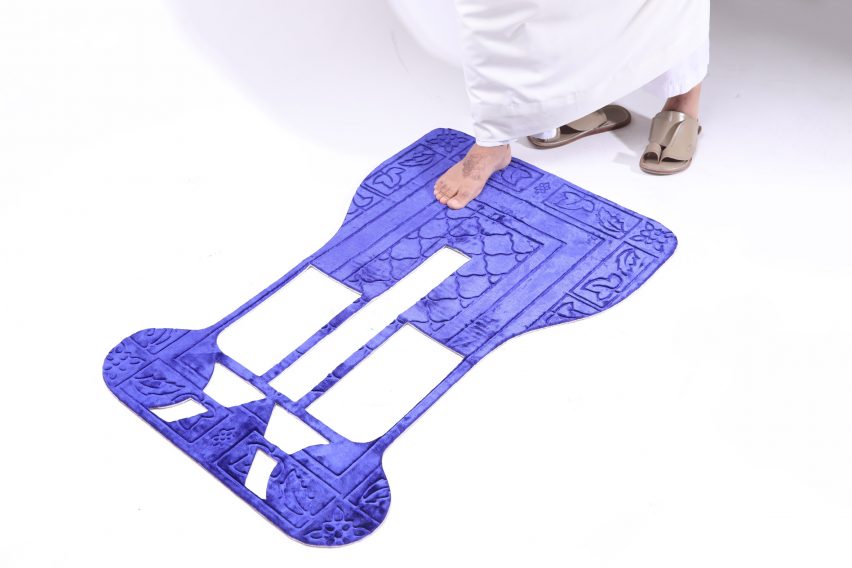
Presenting at Saudi Design Week, the Riyadh-based studio wanted to create a sustainable alternative to the standard prayer rug, an item that is used by Muslims – who make up over 90 per cent of the Saudi population – five times a day.
Given that so many people use prayer mats regularly, reducing the amount of material used in each mat will decrease the amount of material required significantly.
The mat is composed of three main sections. There are two circles for the hands, one triangle for the forehead and a base to sit or stand on. These are interconnected with thin strips of material and embellished with patterns of leaves and flowers.
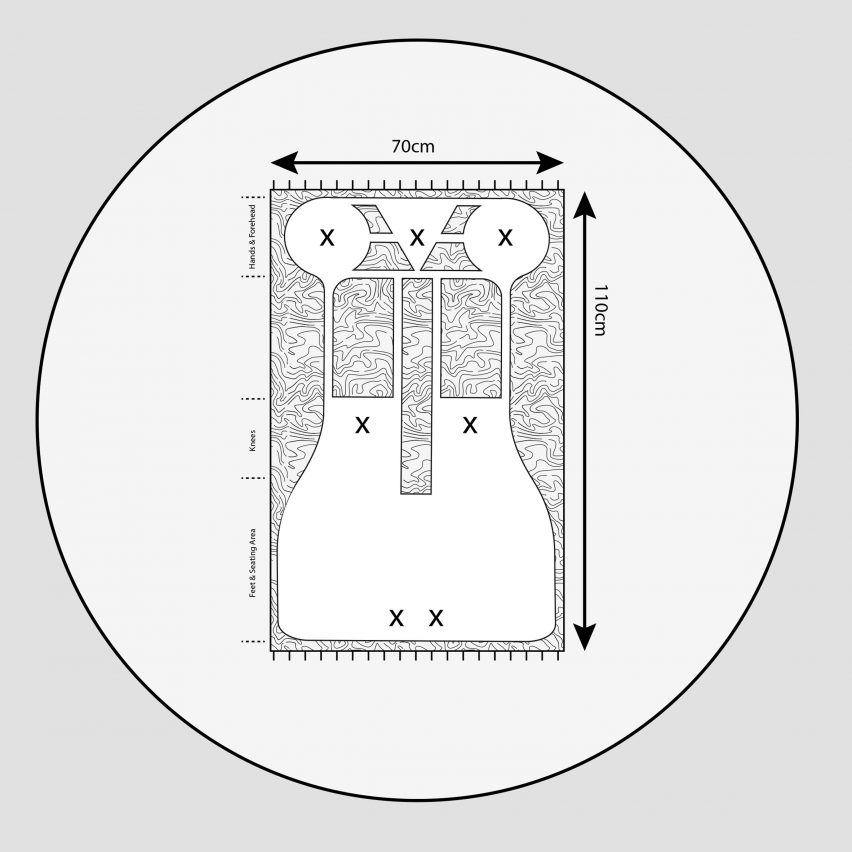
Although the mat is still in its prototype phase, the studio is looking to incorporate adjustable straps to allow the user to customise the distance between the sections, to best suit the dimensions of their body.
"The overall form is also designed to guide the user to maintain correct posture during prayer, as well as encouraging them to reflect on the notion of consumption as a social and environmental responsibility," explained the studio.
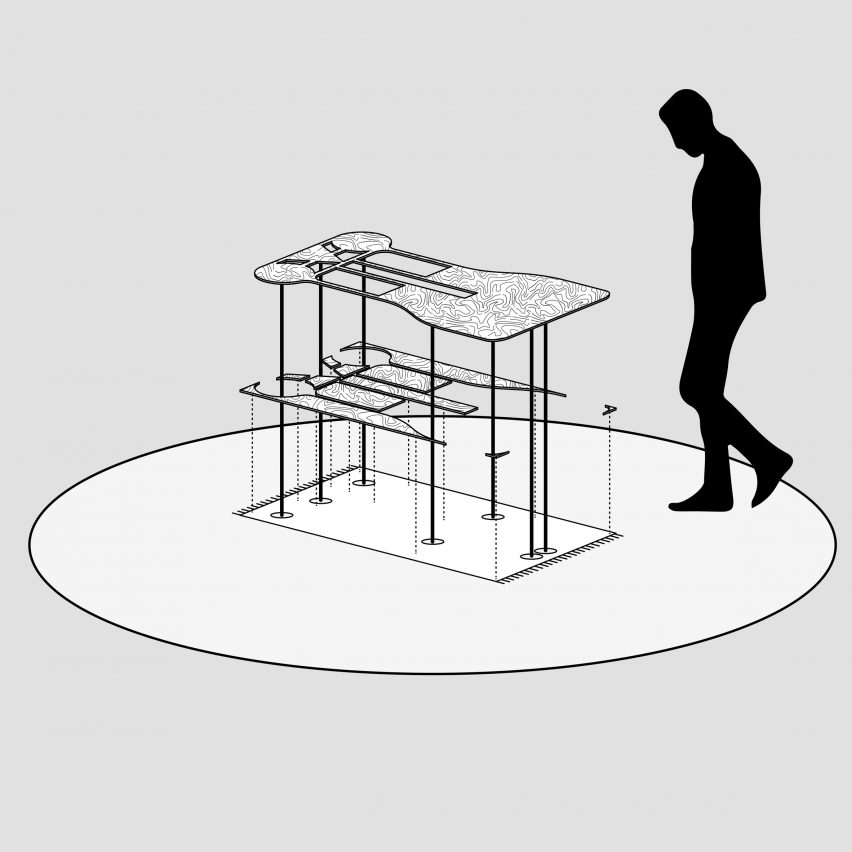
The studio is currently experimenting with using sustainably-sourced materials, including natural rubber, recycled swimwear and cork.
"Our goal is not only to help the environment but also present a comfortable option for all types of users, from young to old," said Shepherd.
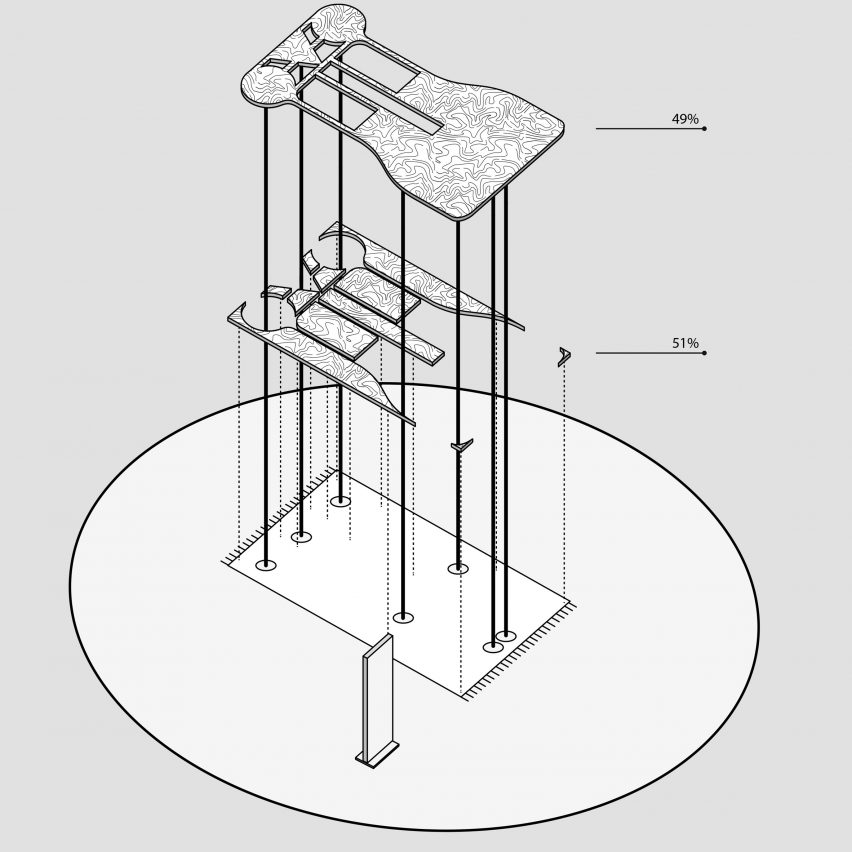
The mat was on show at Saudi Design Week, which took place between 5 and 8 October 2018.
With Saudi Arabia's 2030 modernisation plan well underway, the country is also investing in a host of architectural projects, including a tower that will be the world's tallest building.